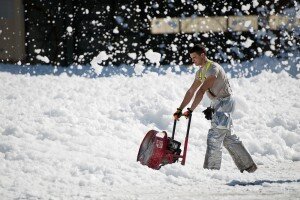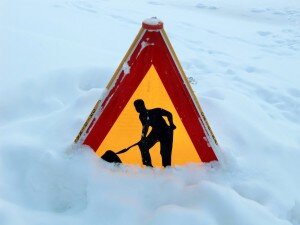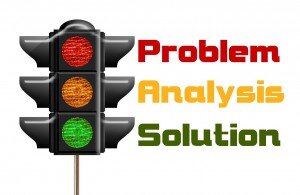You Can’t Prevent Snow and Ice but You Can Manage the Liability Risks They Create
The fall weather has been glorious. The foliage has been spectacular. The Red Sox didn’t make the playoffs, but the Yanks have been eliminated, so at least we won’t have to watch them in a World Series, or worse, in a victory parade.With so many positives to contemplate, why would anyone want to think about winter? The obvious answer: Because it’s going to come again and anyone who endured the last winter in New England understands the importance of being prepared for the next one. Condominium residents, not unreasonably, expect parking lots to be plowed and walkways to be cleared of snow and ice. Boards that fail to deliver those expected services face not only the ire of residents, but also potential liability if residents or visitors suffer ice- and snow-related injuries. Those liability risks for community associations are far greater today than they used to be, because the legal theories governing them have changed.Massachusetts courts traditionally recognized a “natural accumulation of snow and ice” doctrine, viewing slippery, snow-covered sidewalks and streets as hazards created by nature that should be well-known by anyone living in a cold-weather climate. Under that theory, condo residents had an obligation to walk carefully on snow or ice-covered paths; if they slipped and fell, condo associations were not generally responsible for their injuries as long as they could demonstrate that the ice and snow had accumulated “naturally.” Associations used that theory successfully to defend most slip and fall suits – until 2010, when the Massachusetts Supreme Judicial Court rejected it.A “Reasonable Man” StandardIn a landmark ruling (Papadopoulos v. Target Corporation), the court concluded that the distinction between “natural” and “unnatural” accumulations was too murky a standard on which to base liability claims. Instead, the court substituted a “reasonableness” standard, requiring condo associations to demonstrate that they had made “reasonable efforts” to mitigate snow- and ice-related risks. This decision made it much easier for plaintiffs to assert negligence claims against property owners, including condo associations, and made it much more difficult to defend against those claims.Not surprisingly the decision also made associations approach their snow removal efforts more diligently than many of them had in the past. But it raised the obvious question: What qualifies as “reasonable”? How quickly do you have to plow, how clean do roadways and sidewalks have to be to refute a negligence claim?
Condominium residents, not unreasonably, expect parking lots to be plowed and walkways to be cleared of snow and ice. Boards that fail to deliver those expected services face not only the ire of residents, but also potential liability if residents or visitors suffer ice- and snow-related injuries. Those liability risks for community associations are far greater today than they used to be, because the legal theories governing them have changed.Massachusetts courts traditionally recognized a “natural accumulation of snow and ice” doctrine, viewing slippery, snow-covered sidewalks and streets as hazards created by nature that should be well-known by anyone living in a cold-weather climate. Under that theory, condo residents had an obligation to walk carefully on snow or ice-covered paths; if they slipped and fell, condo associations were not generally responsible for their injuries as long as they could demonstrate that the ice and snow had accumulated “naturally.” Associations used that theory successfully to defend most slip and fall suits – until 2010, when the Massachusetts Supreme Judicial Court rejected it.A “Reasonable Man” StandardIn a landmark ruling (Papadopoulos v. Target Corporation), the court concluded that the distinction between “natural” and “unnatural” accumulations was too murky a standard on which to base liability claims. Instead, the court substituted a “reasonableness” standard, requiring condo associations to demonstrate that they had made “reasonable efforts” to mitigate snow- and ice-related risks. This decision made it much easier for plaintiffs to assert negligence claims against property owners, including condo associations, and made it much more difficult to defend against those claims.Not surprisingly the decision also made associations approach their snow removal efforts more diligently than many of them had in the past. But it raised the obvious question: What qualifies as “reasonable”? How quickly do you have to plow, how clean do roadways and sidewalks have to be to refute a negligence claim? A reasonableness standard doesn’t specify the response required; it simply requires you to do what a reasonable person would do under the circumstances, and it recognizes that different circumstances require different measures.If forecasters are predicting that a heavy snowfall will begin pre-dawn on a weekday, having a snow removal crew on the ground before people start leaving for work in the morning would be reasonable. Waiting until late afternoon or the next morning before you begin plowing would not be reasonable under normal conditions. But in a blizzard, waiting for the storm to subside would be a reasonable and probably necessary response.The reasonableness standard also applies to maintenance and repairs. If leaks caused by ice dams damage owners’ units, the association would not be deemed negligent if this is the first time the problem has developed. A reasonable person could not be expected to anticipate a problem that has never occurred before. But if after experiencing ice dams the board fails to make necessary repairs, the association might well be liable for any future damages owners suffer as a result.Respond and DocumentSometimes reasonable and even super-reasonable efforts to deal with a problem aren’t enough. We saw that last year when boards couldn’t find contractors to plow snow, deal with ice dams, or repair damaged roofs. We fielded many calls from frantic association clients, worried that they would be sued for damages caused by problems they were powerless to prevent.The reasonableness standard is demanding, but not irrational. It doesn’t require you to do the impossible. You should make every effort to deal with a problem and document what you have done. Keep a log detailing the contractors you called, when you called them, and how they responded to your requests for help. You should also require snow removal contractors to maintain logs noting when they provided service to your community and exactly what they did on every visit – how many times the plows went through, how much sand and/or salt they applied and where they applied it.It is important for boards to understand the scope and limits of the association’s maintenance obligations, as they are defined in the governing documents. Most documents make it clear that associations are responsible for the common areas, but they don’t always specify who is responsible for limited common areas – balconies, decks, patios and even some walkways, stairways and driveways that are used by individual owners but are not part of the units they own. Unless the documents indicate otherwise, the association’s snow removal obligations and its potential liability risks extend to these areas, too. But including them in the association’s snow removal plans can be costly, and reaching them in a timely fashion during snow emergencies can be difficult.Snow Removal ResolutionsFor these reasons, we recommend strongly that boards adopt a snow removal resolution specifying that the owners who use these limited common areas are responsible for taking care of them. This doesn’t require an amendment to the association’s declaration or bylaws, which owners would have to approve. The state condominium statute allows boards to delegate to owners the maintenance responsibilities for limited common areas. So in many cases, boards will have the authority to enact snow removal resolutions on their own.
A reasonableness standard doesn’t specify the response required; it simply requires you to do what a reasonable person would do under the circumstances, and it recognizes that different circumstances require different measures.If forecasters are predicting that a heavy snowfall will begin pre-dawn on a weekday, having a snow removal crew on the ground before people start leaving for work in the morning would be reasonable. Waiting until late afternoon or the next morning before you begin plowing would not be reasonable under normal conditions. But in a blizzard, waiting for the storm to subside would be a reasonable and probably necessary response.The reasonableness standard also applies to maintenance and repairs. If leaks caused by ice dams damage owners’ units, the association would not be deemed negligent if this is the first time the problem has developed. A reasonable person could not be expected to anticipate a problem that has never occurred before. But if after experiencing ice dams the board fails to make necessary repairs, the association might well be liable for any future damages owners suffer as a result.Respond and DocumentSometimes reasonable and even super-reasonable efforts to deal with a problem aren’t enough. We saw that last year when boards couldn’t find contractors to plow snow, deal with ice dams, or repair damaged roofs. We fielded many calls from frantic association clients, worried that they would be sued for damages caused by problems they were powerless to prevent.The reasonableness standard is demanding, but not irrational. It doesn’t require you to do the impossible. You should make every effort to deal with a problem and document what you have done. Keep a log detailing the contractors you called, when you called them, and how they responded to your requests for help. You should also require snow removal contractors to maintain logs noting when they provided service to your community and exactly what they did on every visit – how many times the plows went through, how much sand and/or salt they applied and where they applied it.It is important for boards to understand the scope and limits of the association’s maintenance obligations, as they are defined in the governing documents. Most documents make it clear that associations are responsible for the common areas, but they don’t always specify who is responsible for limited common areas – balconies, decks, patios and even some walkways, stairways and driveways that are used by individual owners but are not part of the units they own. Unless the documents indicate otherwise, the association’s snow removal obligations and its potential liability risks extend to these areas, too. But including them in the association’s snow removal plans can be costly, and reaching them in a timely fashion during snow emergencies can be difficult.Snow Removal ResolutionsFor these reasons, we recommend strongly that boards adopt a snow removal resolution specifying that the owners who use these limited common areas are responsible for taking care of them. This doesn’t require an amendment to the association’s declaration or bylaws, which owners would have to approve. The state condominium statute allows boards to delegate to owners the maintenance responsibilities for limited common areas. So in many cases, boards will have the authority to enact snow removal resolutions on their own. Some boards are willing to take care of limited common areas when time and resources permit, and hybrid maintenance arrangements of this kind are fine. But the board’s snow removal resolution should specify that while the association may handle snow removal sometimes, primary responsibility for doing so rests with the owners.Confusion and liability concerns may arise if the board regularly handles snow removal outside of common areas and owners come to expect and rely on the board to provide that service. A recent decision by an Illinois appeals court (Dietch v. Carl Sandburg Village Home Owners Association) illustrates the problem.When a condo owner (Dietch) slipped on an ice-covered public sidewalk in front of her building, she sued the board, claiming that the association was responsible for snow removal from the area. She based her claim on a manual the board had distributed to association employees, directing them to remove snow from the public sidewalk as well as from common areas.Association officials acknowledged that the manual targeted a city ordinance requiring owners to keep sidewalks in front of their properties clear of snow and ice. But the court ruled that while the ordinance created a legal obligation for the association, it did not create a contract with owners nor establish an obligation on which they could rely. The city might fine the association for violating its ordinance under this ruling, but owners who slipped on the public sidewalk could not sue the association for damages based solely on the existence of the internal manual.Had the board in this case distributed its snow-clearing manual to owners, and had the plainitiff argued that, based on those instructions, she had reasonably expected the association to keep the sidewalk clear, the outcome might have been far less favorable for the community. A properly worded snow removal resolution can eliminate the ambiguities that can support negligence claims.These resolutions are protective, but they’re not fool-proof. They won’t completely eliminate liability risks and they won’t prevent owners who are injured or who are sued by others from suing the association. But they will make it more difficult for owners to win a negligence claim against the association when the board can demonstrate that the owners themselves were negligent.
Some boards are willing to take care of limited common areas when time and resources permit, and hybrid maintenance arrangements of this kind are fine. But the board’s snow removal resolution should specify that while the association may handle snow removal sometimes, primary responsibility for doing so rests with the owners.Confusion and liability concerns may arise if the board regularly handles snow removal outside of common areas and owners come to expect and rely on the board to provide that service. A recent decision by an Illinois appeals court (Dietch v. Carl Sandburg Village Home Owners Association) illustrates the problem.When a condo owner (Dietch) slipped on an ice-covered public sidewalk in front of her building, she sued the board, claiming that the association was responsible for snow removal from the area. She based her claim on a manual the board had distributed to association employees, directing them to remove snow from the public sidewalk as well as from common areas.Association officials acknowledged that the manual targeted a city ordinance requiring owners to keep sidewalks in front of their properties clear of snow and ice. But the court ruled that while the ordinance created a legal obligation for the association, it did not create a contract with owners nor establish an obligation on which they could rely. The city might fine the association for violating its ordinance under this ruling, but owners who slipped on the public sidewalk could not sue the association for damages based solely on the existence of the internal manual.Had the board in this case distributed its snow-clearing manual to owners, and had the plainitiff argued that, based on those instructions, she had reasonably expected the association to keep the sidewalk clear, the outcome might have been far less favorable for the community. A properly worded snow removal resolution can eliminate the ambiguities that can support negligence claims.These resolutions are protective, but they’re not fool-proof. They won’t completely eliminate liability risks and they won’t prevent owners who are injured or who are sued by others from suing the association. But they will make it more difficult for owners to win a negligence claim against the association when the board can demonstrate that the owners themselves were negligent.
